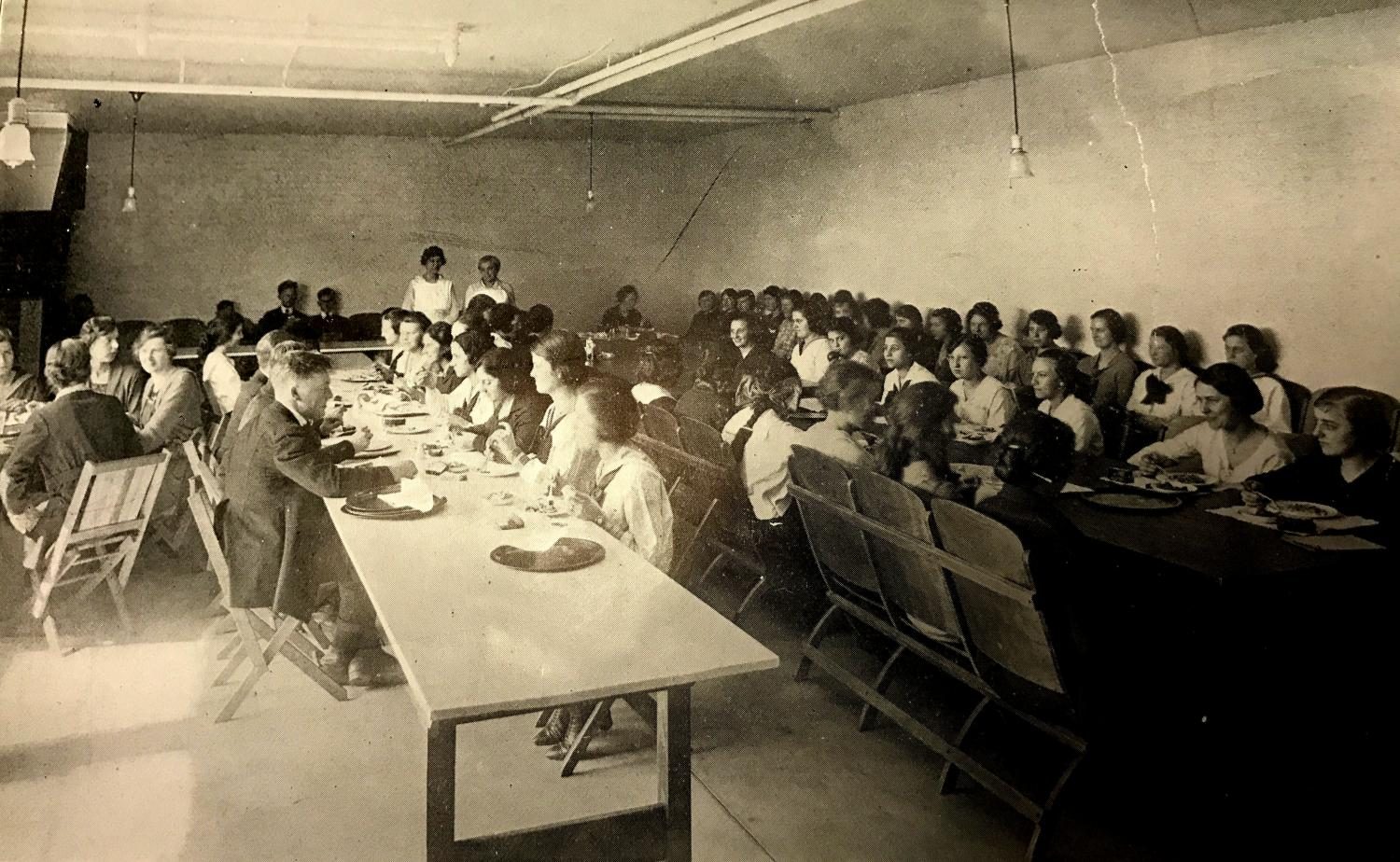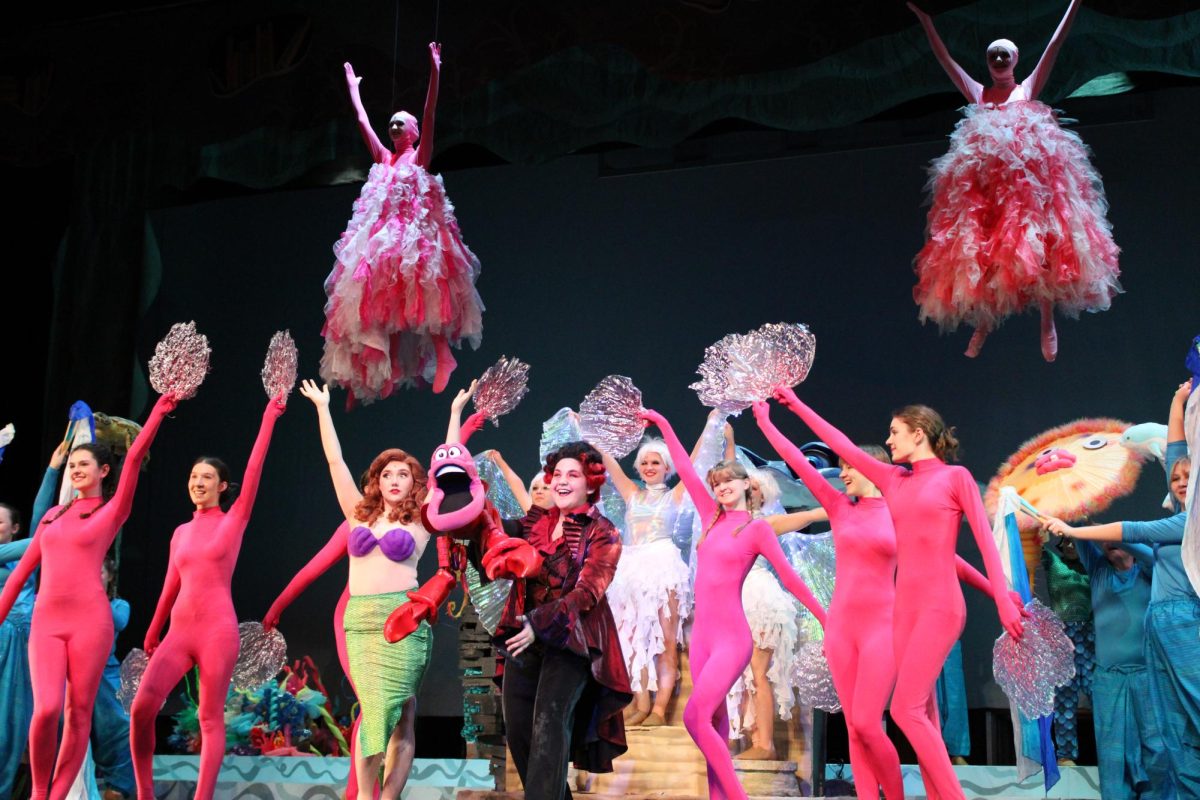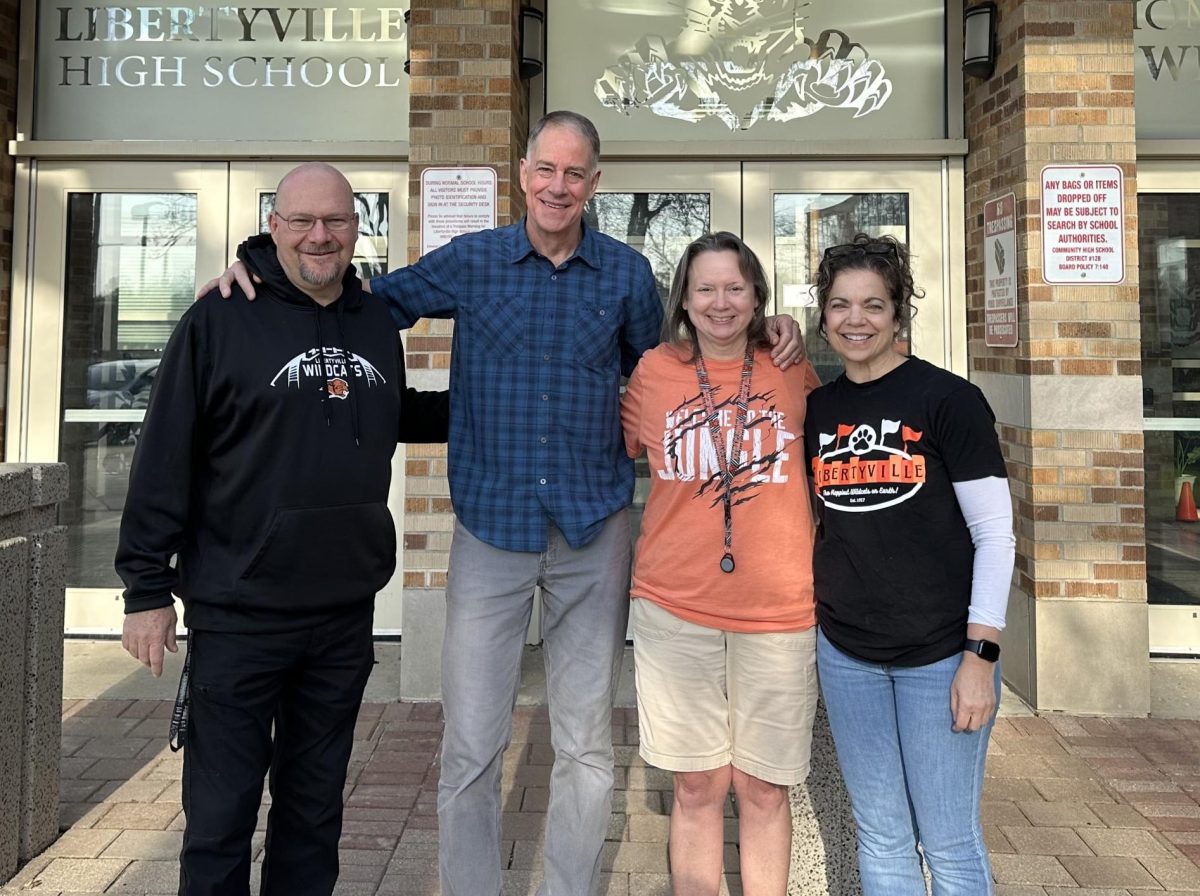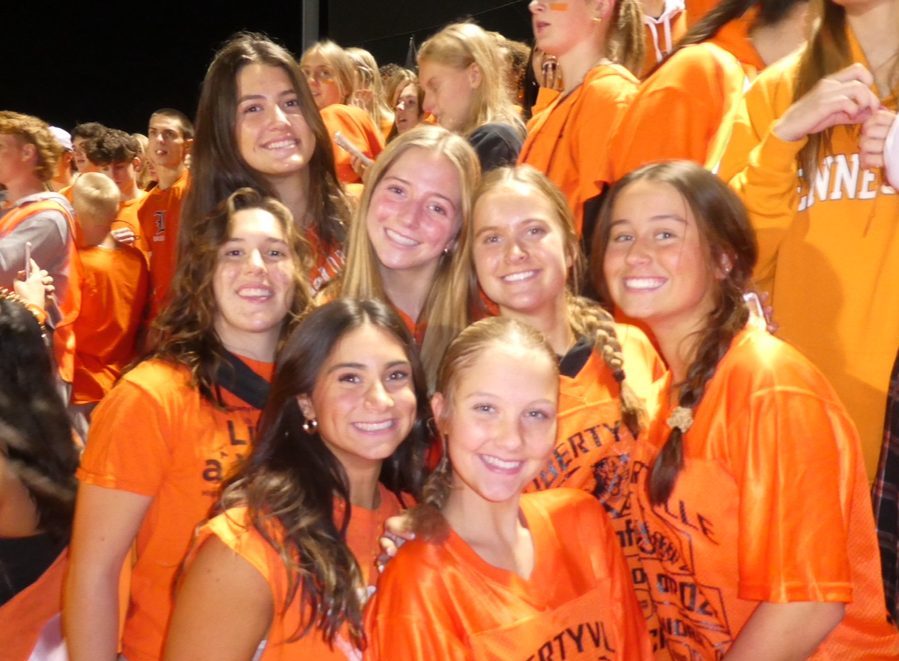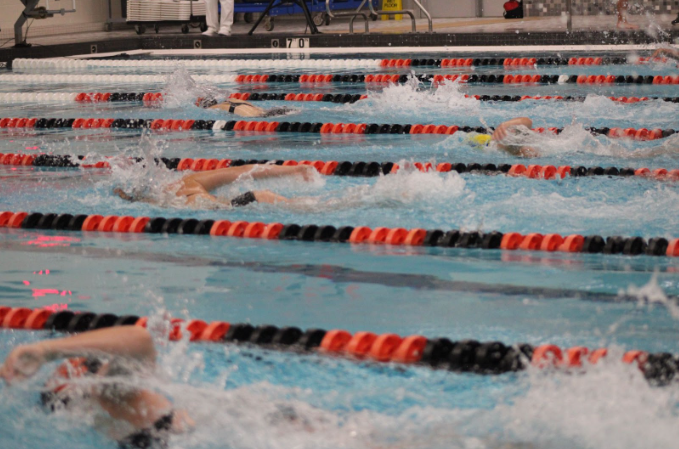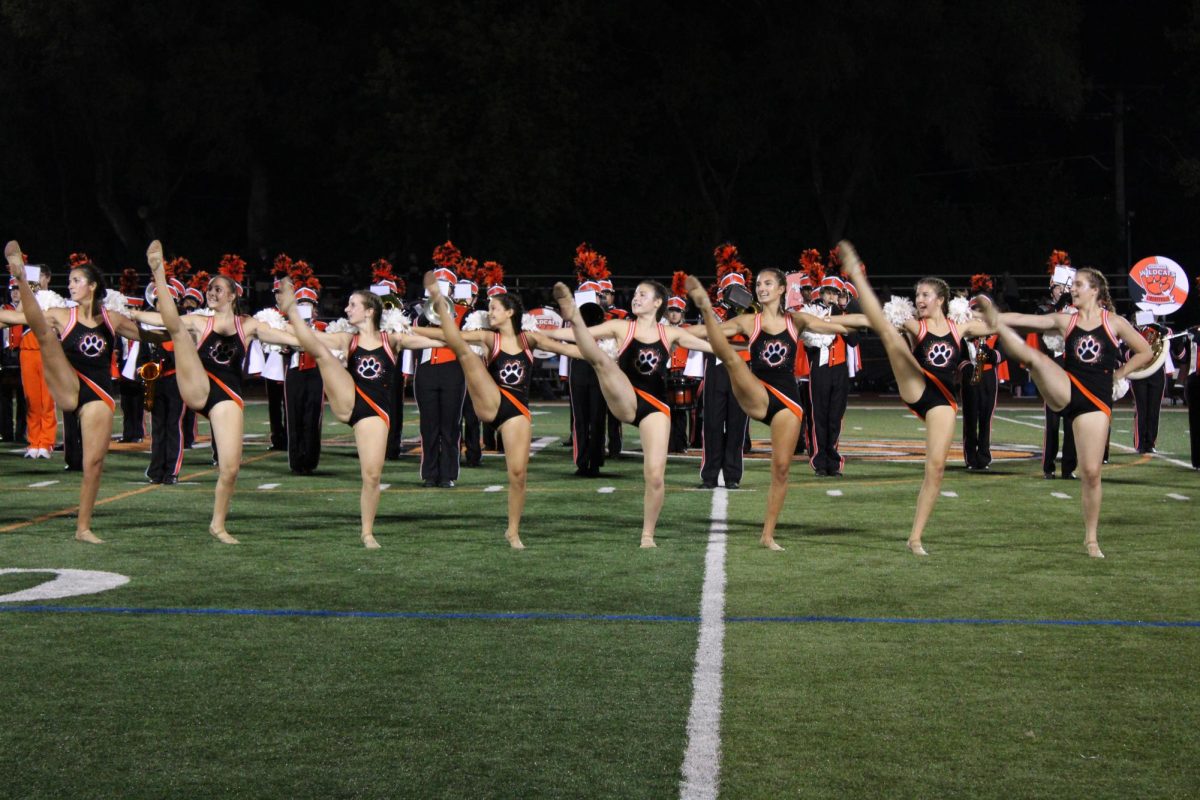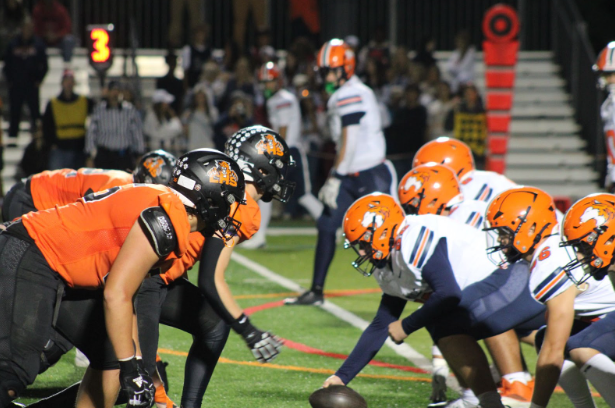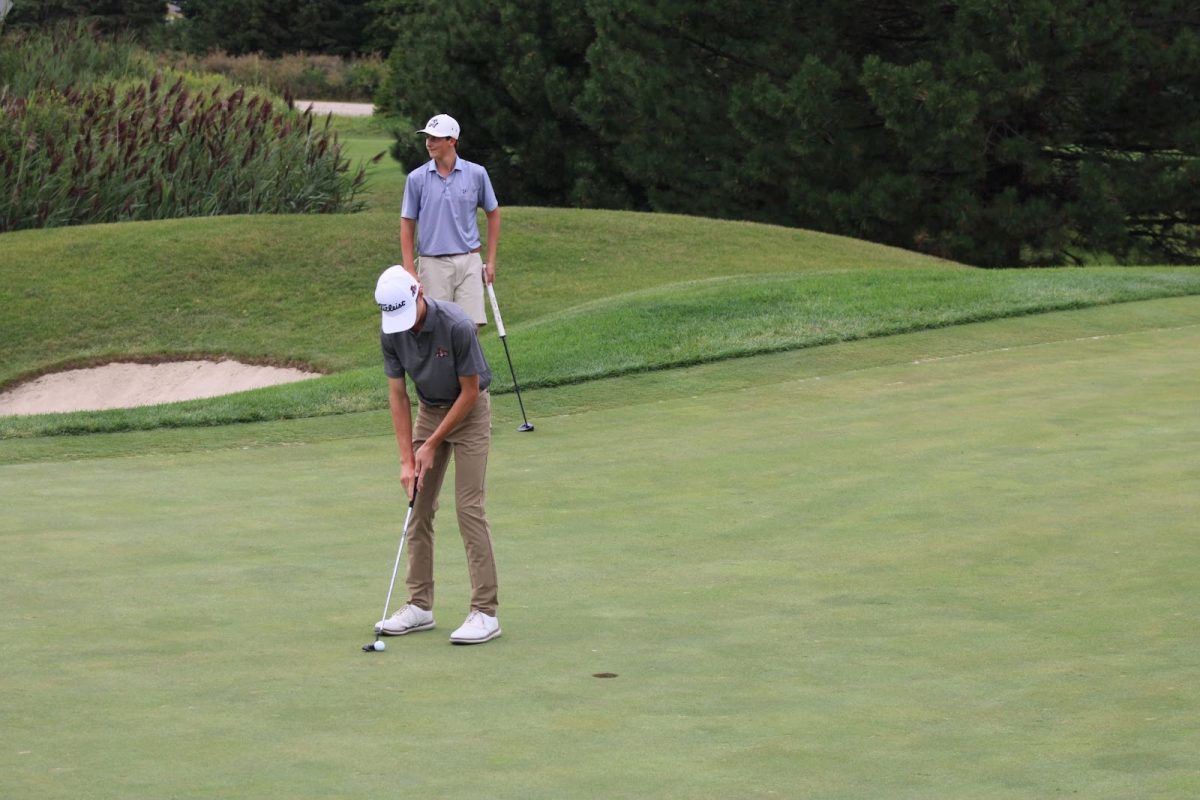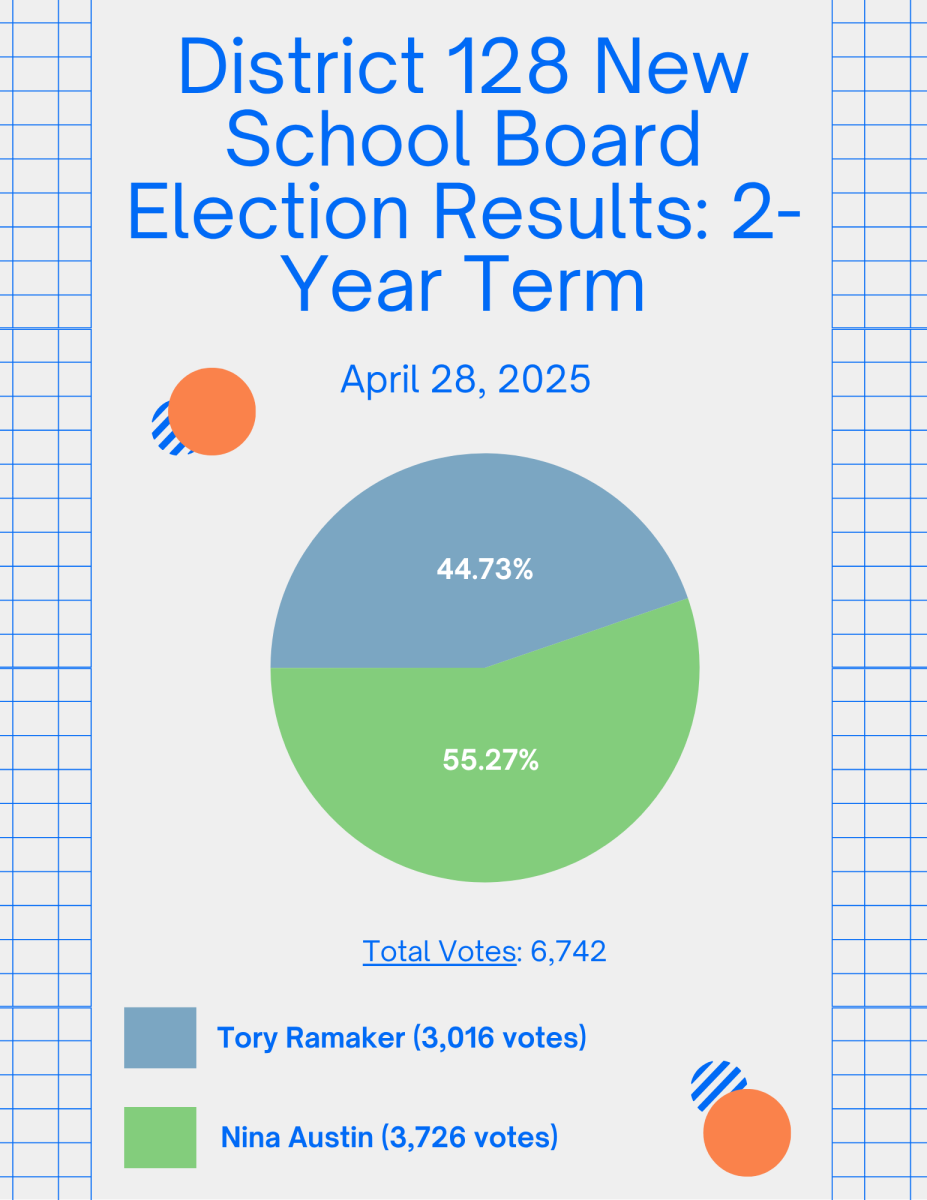Students enjoy a meal in the basement of the Brainerd building, where the cafeteria was located.
In honor of the school’s 100-year anniversary, we looked through old yearbooks, DOIs and websites to find 100 facts that are unique to LHS’s history.
- LHS was the fourth high school in Lake County, and it opened in 1917.
- The first year of school had a rolling start; because so many of the men were overseas for World War I, there weren’t enough farm hands to help with the harvest, and so high school-age boys were expected to be helping on the farm during the official start of school. Because of this, it was acceptable for them to start in October rather than at the end of the summer.
- The first school administrator (J. Norris Throgmorton) enlisted in the U.S. Army in the middle of the first year the school was open and was deployed overseas.
- For a week in early 1918, during one of the coldest winters on record, LHS had to close its doors for over a week because of a coal shortage due to the World War. They couldn’t heat the school, making it unsafe for students to attend.
- In memory of the Brainerd building, there is a memorial made of bricks being built on the southeast side of the property of where the former school was.
- In 1918, in order to be in the “Athletic Association,” students were not allowed to eat “any pastry, candy or sweetened foodstuff” and if they did, they could be suspended for one week.
- Including the principal, there were seven faculty members the first year of LHS.
- In 1919, there were so few students in the graduating class that there was a description about each student in the yearbook.
- When the first-year students attended LHS, the clubs they had were “The Student Council of Control,” “Orchestra,” “The First Aid Class,” “Glee Club” and “Nautilus.”
- In 1919, each class had a poem special to their grade that was chosen by the Nautilus staff.
- Libertyville High School used to be known as Libertyville Township High School (L.T.H.S.).
- In the beginning years of school, there was a section in the yearbook for students to submit their literature, similar to today’s Slant of Light.
- In the 1920 yearbook, there was a page dedicated to people’s names, nicknames, virtue, weakness, ambition and realization.
- In 1920, a new athletic field was constructed, called Liberty Field. In addition, a new cedar track was being constructed on the athletic field.
- Students used to have to apply to enroll in L.T.H.S.
- Marlon Brando, a famous actor, attended L.T.H.S when it was at the Brainerd building and worked as an usher at the Liberty Theater. However, because of his rebellious behavior, his father sent him to Shattuck Military Academy.
- In 1921, students were in charge of athletic games and budgets.
- In the later 1920s, each class had their own class color, motto, and flower.
- In 1925 there was a superlative named “Class Statistics” for the best worker of crossword puzzles.
- Prior to Drops of Ink, the News Staff began to have a big role in the school in 1925. More people began to join, and it became more popular amongst students.
- In 1926, L.T.H.S. had a valedictorian, which is something LHS no longer has.
- The first L.T.H.S. Pep Board was founded in 1926 and was made up of eight students. The Pep Board ran student life at sports games and events.
- Drops of Ink was established in 1926. It did not begin until later on in the year, so only four issues were published the first year.
- Drops of Ink used to come out twice a month and cost 50 cents per copy.
- The class of 1927 claimed in the yearbook that they would leave their ghosts to haunt L.T.H.S. in the future.
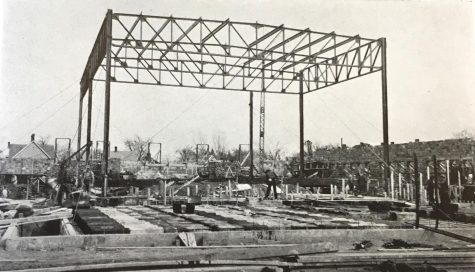
Photo from
Construction of an addition to Brainard occurred in 1929, which included a new gymnasium, classrooms, and a heating plant. - In 1928, the school colors were changed from maroon and white to black and orange because too many schools in L.T.H.S’ conference wore maroon and white.
- On Oct. 6,1928, the Board of Education approved the construction of a new gymnasium. According to students of that year, “a larger gymnasium was necessary to maintain our reputation for athletic prowess in competition with other schools.”
- In the earlier years of L.T.H.S, there was a club called The “L” Klub. Males that received what we now know as the Varsity “L” were members of this club. People would recognize them by the distinct black and orange sweater they wore with an “L” stitched on the front.
- Another club that existed in the earlier years was All Americans. This club consisted of underclassmen who had never played football but were interested in it. The All Americans were prepared to play on the actual team later on in high school.
- In comparison to the 38 cheer team members now, there were only three members on the team in 1929.
- The first annual homecoming was held on Oct. 18, 1930.
- In 1931, the Zoo League was started. All players who didn’t make the basketball team had the option to join the Zoo League, where they would be divided into different teams that were named after animals found in a zoo, like apes or tigers.
- The new sport of archery was founded in 1931 and was practiced either during second period or after school.
- L.T.H.S used to have “Ivy Day.” This was a day where Ivy was placed on the side of the building to commemorate academic excellence.
- Membership requirements to National Honor Society (NHS) when it first started were very select. Only students in the upper third of the senior class were eligible, and only 15 percent of that group could be selected by the principal and faculty committee to be inducted.
- In 1934, L.T.H.S. held 15 dances; four were evening parties and 11 were afternoon dances.
- LHS used to have a club dedicated to stamp collecting, stamp auctions and the discussion of stamps.
- From 1949 to 1964, Brainerd was referred to as Libertyville-Fremont Consolidated High School.
- In 1947, students attended a Snake Dance Pep Rally, where they snaked around downtown Libertyville and were followed by the band.
- Willie the Wildcat’s former name was Tom.
- The LHS water polo team used to be called Wildcat Guard, which is now a swim lesson service offered by the high school and taught by high schoolers.
- There used to be a Movie Operators and P.A. Crew that would help teachers show movies in class.
- In 1945, LHS lacked men because they were sent to fight in World War II. In the yearbook, students expressed how they hoped that the war would soon be coming to an end because they wanted the men back for next year’s homecoming.
- The Sadie Hawkins Dance, what is now called Turnabout, used to be held in a cow barn. Horses and chickens were in the barn while the dance was in session.
- Butler Lake Building, where LHS is now, first opened in 1954. It was for sophomores, juniors and seniors.
- In Libertyville’s earlier years, students used to have to drive themselves to prom. This caused many people to get lost because of poor directions.
- Before Caring for Cambodia was a club at LHS, clubs like NHS donated relief funds to Cambodia.
- It is said that in 1957, the brand new gym was flooded due to kids setting off the sprinklers. They had to replace the gym floor.
- There used to be a cheerleading team for not only the football team but wrestling and soccer as well.
- Similar to the music playing in the hallways during the passing period, two students in 1980 would arrive to school early to play music throughout the halls and classrooms for students’ enjoyment.
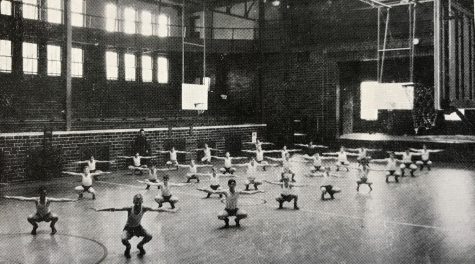
Photo from 1935 yearbook
Gym classes used to be separated by gender. These men are participating in their daily workout. - Yearbook used to host a “nautigraph party” to pose as a yearbook signing. Yet, instead of receiving the yearbook at the end of the year, students would receive it at the beginning of the year, including graduated seniors who would come to school just for the party.
- Prom used to be held locally at Tally Ho Country Club in Mundelein. 1970 was the first year upperclassmen were allowed to bring underclassmen as dates, resulting in “a record 172 couples.”
- Students in 1970 protested for peace because of the Vietnam War. A few students wore peace signs attached to their prom suits.
- LHS used to have a synchronized swimming club called Naiads.
- The Butler Lake Building added the auditorium, pool and fieldhouse in 1971.
- In 1981, LHS was overpopulated with students. In efforts to decrease the amount of students throughout the day but not overall, LHS offered junior and seniors an alternative night registration.
- The class of 1981 gave a gift to the high school that was said to grow in the front circle of the school – a crabapple tree.
- There used to be a school bonfire to kick off all the homecoming events. They burned many objects like wooden crates and anything that resembled the football team that LHS would be playing for the homecoming game.
- LHS used to have a Jump Rope-A-Thon.
- At one point in time, students participated in a Fall Festival. Students could play their instruments, dance alone or in small groups to showcase their talent.
- Additionally, the week before spring break used to be named Humanities Week. Students would show others in class about their cultures and talents. Some people showed kung fu, some danced and foreign exchange students lectured about their experiences.
- Around Halloween, LHS used to host belly flop contests. This was part of the Beach Party LHS hosted. Students participated in other activities such as the limbo, swimming, “the best legs contest” and volleyball.
- In 1983, around the end of the December, there was a Cabbage Patch doll craze where everybody and anybody wanted one.
- 1984 was the first year Drops of Ink and Yearbook began to use computers.
- The Turnabout dance used to be referred to as Ladies Night.
- In 1985, students TP’d the school campus in an attempt to pull a light prank in honor of Homecoming.
- According to Mr. Kevin Holly, the Technical Theater Coordinator, there is an “urban legend” that flood lights located in the Studio Theater were donated to LHS via the former Technical Production head of LHS, Chuck McCullough. These lights are said to have been used for the 1960 Kennedy-Nixon presidential debate in Studio 1 CBS Chicago. They have the CBS “eye” logo on them.
- LHS used to have a start time of 7:55 a.m.
- Rather than having a resource center to combine all subjects (MASH), LHS used to have separate math, science, and career resource centers.
- LHS junior and senior classes used to host Candy Cane and Apple Day. People were able to purchase a candy cane or apple to go along with a message for their friends, much like Candy Grams that have been at LHS recently.
- Students used to be required to take only four academic classes.
- In 1985, there was a waitlist for prom because so many students were interested in attending and there wasn’t enough space.
- Underclassmen used to only get 25 minutes to eat. Seniors not only got the privilege of leaving campus, but a 50-minute period, which wasn’t standard for all grades.
- In 1985, seniors were only allowed to miss two days for visiting colleges.
- Prior to 1985, students were only required one year of math. In 1985, they were required two years of math, and one credit of a foreign language, art, or music class. This made the students furious, and they expressed this in the yearbook.
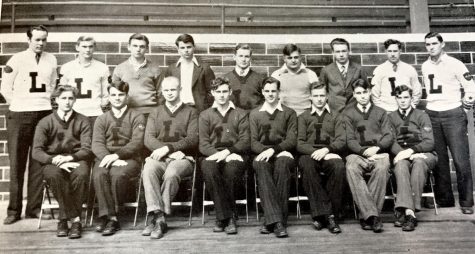
Photo form 1931 yearbook
These men in 1931 were members of the well-respected “L” Club, where athletes would receive their Varsity “L”s. - In 1990, the Homecoming theme was “Sweet Home Chicago,” which was the same theme of the 2015 Homecoming.
- Graduation used to be hosted at Ravinia in the pavilion, followed by the same after-party LHS has today – activities in the field house until 4 a.m.
- When Brainerd was still part of LHS, freshmen were the only grade who attended that part of school. They had to eat lunch in the basement, which was frequently complained about by the freshmen classes.
- LHS used to have a program called work-release. Students were eligible to leave after seventh period, as long as their employers wrote a note to school giving them permission and describing the extent of their work.
- In 2000, VHHS opened its doors and all freshmen who would have attended LHS went to Vernon Hills instead.
- LHS first installed air conditioning in 1999.
- In the early 2000s, LHS used to have a Kick Off Dance to start off the school year. The seniors would organize groups for the annual lip sync battle.
- The Kick Off Dance was usually held in the fieldhouse, but in 2000, it was at VHHS. This caused a lot of confusion – some students went to LHS, and others didn’t know their way around VHHS and got lost.
- In the 2000s, long dresses were popular amongst all grades for both Homecoming and Turnabout. Currently, it is more common to see long dresses soley worn by upperclassmen for homecoming.
- The movie “New Port South” was filmed in Brainerd in 2001.
- 2005 was the first time LHS brought a real horse into the school for the fall musical, “Oklahoma.”
- In addition to Snowball, there used to be a club called SADD – Students Against Destructive Decisions. Not only did they advocate for drug and alcohol prevention at LHS, they would go to elementary schools and spend a day with them to show the younger kids how to have fun without substances.
- LHS used to have four programs that students could take to help prepare them for outside jobs. In addition to preparing them for things such as interviewing, they also received credit to use toward the required amount for graduation.
- There used to be an annual LHS fashion show, which was produced by the Fashion Club.
- LHS used to have Peer Mediators – a group of students who would act as counselors and help students with their internal problems and group conflict.
- In 2008, part of the movie “Public Enemies” was filmed in a science lab, offices, the front entrance and the locker rooms of LHS.
- The Brainerd building was honored for being the first four-year school in Central Lake County and for being in use for more than 80 years in 2008.
- In 2009, “The Unborn,” a horror film, was filmed in locker rooms at LHS.
- Currently at LHS, there are 1,973 students enrolled. In 1917, there were 138.
- The senior graduating class for 2018 consists of 538 students. The first graduating class had 10 seniors.
- For the 2017-2018 school year, there are 265 staff members. The school began with seven faculty members.
- The current ratio of female to male students at LHS is 1 to about 1.1. The first year of LHS, the ratio was 1 to 1.6.
- A logo that was painted on Brainerd gym’s hardwood floor is currently hanging up in the West Gym.
- Adjacent to the main hallway, near office 219B, LHS has the uniform of a veteran who fought during D-Day in WWII. This uniform belonged to a janitor who used to work for District 128.
- Hanging in the main gym is the retired cheer uniform of Maddy Mcinerney, retired basketball jersey of Jack Lipp, and retired principal Walter “Wally” Hornberger’s orange suit.



